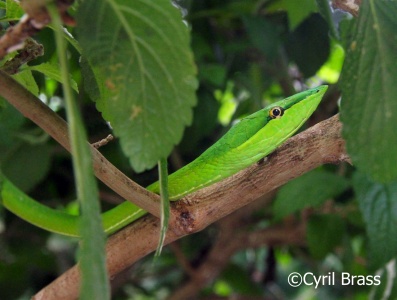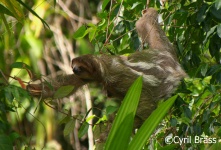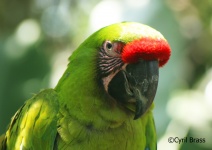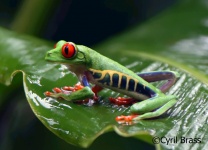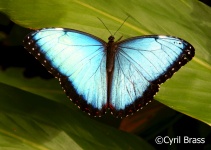Going Wild in Costa Rica
Going Wild in Costa Rica by Erika Ravnsborg
Ever wonder where you can find the wildest things? Maybe even be apart of them? Costa Rica brings its own unique magic with the local flora and fauna found in various parts of the country. Diversity is the name of the game here and there is an abundance of it.
This nation houses so many species that it would be near impossible to keep track of them all. This includes; 256 mammals, 903 (known) birds, 245 reptiles, 34 000 insects, and countless plants.
Although you can not see every single one (even if you wanted to), there were some creatures that you can have close encounters with. Don’t worry it will be at a safe distance and no one will get bitten. There are however new discoveries to be made and adventures that will live forever.
Here is what you can find there:
Mammals
Spider Monkey: An acrobatic primate that can be seen in the treetops. Gifted with flexible and loose limbs like a prehensile tail that acts as a fifth hand, they tend to be the most lively at night as they leap, hang, dangle, and bounce from tree to tree. They can be 5 feet long in length, coloured in black or copper, and are the most solitary of the monkey species.
Red-Brocket Deer: There are different kinds of deer but this particular deer can only be found in Costa Rica. They tend to be a darker reddish brown, 43 inches long and 55 pounds. You can spot them in a thicker bush and they have short, back facing horns on their skulls. This is why they tend to keep their heads down to avoid getting stuck in the dense vegetation around them.
Sloth: Everyone’s favourite slowest moving mammals are found here. These tree-dwelling marsupials move very slowly and deliberately taking their dear sweet time with everything they do. Often times you will find them fast asleep as they sleep 20 hours a day. Despite their cute appearance these creatures are masters of disguises and can fool the predators that hunt them thanks to their camouflage.
White Faced Monkey: Intelligent, mischievous, and distinctive in appearance, these monkeys are found in many spots of Costa Rica in the wild and sometimes will venture into smaller towns. They tend to be 22 inches in length, weighing 2-3 pounds, and have dark hair covering most of their bodies with the face neck, and shoulders being a tanned colour. These little guys love shiny things so watch your stuff.
Black Myotis Bat: A tiny but common bat found in this tropical paradise. Found to be only 2 inches in length you can recognise these tiny bats by their dark short fur and no-nose leaf snout. These bats are often found well-hidden, sleeping in plants during the day, and flying solo at night. They tend to eat various insects and arachnids so they keep the nasty little stuff at bay.
Birds
Yellow-Fronted Toucan: The largest toucan in Costa Rica and an aggressive one. You can see them in multitudes and often are playing with their food. They are easy to spot with their long yellow beak and bright chest. They are anywhere between 18.5-24 inches, and 1.3-1.6 pounds. If you are lucky, you can see them have a duel with their beaks in the trees.
Fiery-Billed Toucan: Medium-sized, slender body, and a bright orange beak gives you this striking bird. With a red belly to match, you can spot this bird in small groups in heavily forested areas. However, they also have a love for bushes and gardens. It is normally 18 inches long and 8-10 ounces.
Green Crowned Brilliant Hummingbird: A strong and large hummingbird that all can see with its bright green feathers. The males have a bright blue patch on its throat while the females have a spotted green breast; Also, the males are a little bigger than the females. You can often find them feeding off of flowering plants.
Great Green Macaw (Parrot): The largest parrot in Costa Rica, the second heaviest macaw, and the third heaviest parrot species in the world. This green wonder has a lot of stats to its name but its beauty is second to none. For all the romantics out there; these birds are monogamous and mate for life.
Yellow Breasted Crake: These birds are often found in wetlands, marshes, and ponds in tropical lowlands. They can be identified by (yes) their yellow chests that stand out amongst the brown, white, and black feathers. They are very small and hard to spot but if you are looking for them, look to the waterlilies and similar plants.
Great Curassow: Also known as the Wild Turkey. These big birds were once a great game bird but now are found in protected areas due to excessive hunting. Often found in small groups this bird has a low reproduction rate and can only lay two eggs at a time. You can spot them by the funky-looking feathered mohawk that they have.
Reptiles and Amphibians
Brown Basilisk: A solitary brown lizard that has a dorsal on the top of its head and chin. Commonly, brown with black stripes and a long tail. They are a super fast lizard that has special padding on its feet where they can “walk on water.”
Black Spiny-tailed Iguana: The largest of its species, this particular iguana also happens to be the fastest moving lizard as it can move 34.6 km/h (21.6 mph). You will notice these big guys by their long tails, spiny backs, and black stripes along their bodies. These guys are social animals that live in colonies and are active during the day. So, they are easy to spot.
Red-eyed Tree Frog: One of nature’s brightest creatures, the red-eyed tree frog has a striking green body that has blue and yellow stripes on their sides, white underbelly, and orange/red feet. Although colourful these amphibians can be hard to spot as they blend with the leaves in tropical climates. This keeps them safe from predators.
Green Vine Snake: Super tiny, super poisonous. In other words, small but deadly. You can notice them by their bright green slender bodies that are anywhere between 30-60 cm long. They love to feed on insects, frogs, and lizards but can consume eggs, small birds, and rodents. These little guys often look like vines (which is how they got their name) so be careful!
Insects and Others
Land Crabs: These crabs are small at 15-20 centimetres and can be eaten. They are also a regulated species. You will find lots of them on tropical floors but still need to be close to the sea in order to lay their eggs. You can notice them by their bright orange legs and are usually in groups called, “casts.”
Zebra Tarantula: These cool crawlies can be a pet for a lucky owner as they are low maintenance and easy care. They tend to be skittish and move quickly so handling them can be a challenge especially with their bite works something like a bee sting. Don’t worry, they only bite when they feel threatened. You can notice them by their black bodies and white stripes on their legs. They tend to be burrowers and feed on smaller insects.
Slenderbrown Scorpion: It is a good idea to give theses guys space when you see them but if you are armed with a UV light you can watch it glow. It appears brown when you first see it but with the light it glows a glorious teal. They say that you can tell how poisonous a scorpion is by the size of its pinchers. The smaller the pinchers, the more poisonous. Watch out!
Headlight Beetle: One of the coolest insects you will ever see. When it is dark you can see two luminescent spots on its head behind its eyes. They are considered the largest and brightest of the glowing insects. When it senses a predator is about, their lights would glow brighter to scare them off. How well does that work?
Blue Morpho Butterfly: This is the most recognizable butterfly with its striking blue wings that glow in the sunlight. These little guys love the sunlight and it is no wonder that this is the national symbol of Costa Rica. It is said that when you spot one of these beauties you should make a wish because it will grant you your wish.
Plants
Wild Brown Orchids: With over 1400 species of orchids, it is no wonder that the orchid is the national flower of Costa Rica. The wild brown orchid only blooms in March but it is memorable to those who spot it. Although it does not have the best fragrance, the orchid has a natural beauty that captures all of us. It livens our taste buds with the world’s favourite flavour of vanilla!
Rattlesnake Ginger: This unique plant found in Costa Rica and Panama is named due to the fact that it resembles a snake’s skin. They tend to be 10 inches long and have flowers that can be yellow, red, brown, and green. The fun thing about these plants is that they fold up at night as if they are praying then fall down when the sun is out.
Kapok Tree: One of the most used trees in the world by humans and wildlife is this remarkable tree. As it is a light wood that can be made into various needed items, its oils can be made into soaps, and its silky fibers makes excellent stuffing for pillows. It can be as high as 200 feet and there is a famous one that is over 500 years old in La Fortuna. You can find it outside of the Rio Celeste National Park.
Angel Trumpet Flowers: A beautiful but deadly flower that has a pleasantly sweet scent at night. But sniff at your own risk because you can get some nasty and unwanted side-effects. You can experience things like fever, delirium, hallucinations, memory disruptions, and in some cases death. And yet it can be found in some modern medicines for asthma and other conditions. Feel free to admire its beauty but be careful.
Strangler Fig: An interesting tree to say the least. These trees tend to cover a host that eventually dies due to the fact that these littler trees suck the nutrients out of it. It can grow up to 50 high and be parasitic to the host tree despite it protecting it from harsh weather. However, after the host tree dies and becomes completely hollow. These trees provide food and shelter for various birds, bats, and other small animals.
The list goes on and on. So do the memories. One of the many ways a person can expand their knowledge is to immerse themselves in nature and listen to the stories of the wildlife experts.
They sure know their stuff and can teach you how important the ecosystem is not just for them but for all of us. And who knows? It could lead you to the adventure of a lifetime. That is what finding wildlife is like: An adventure.
About the author;
Erika Ravnsborg is a freelance writer/blogger/adventurer/explorer from Alberta, Canada. She has a blog called “This Magical World” which features her enchanted tales of travel, food, shopping, and culture to which she regularly writes.
Wildlife Photo Images by Cyril Brass – Brass Photography
